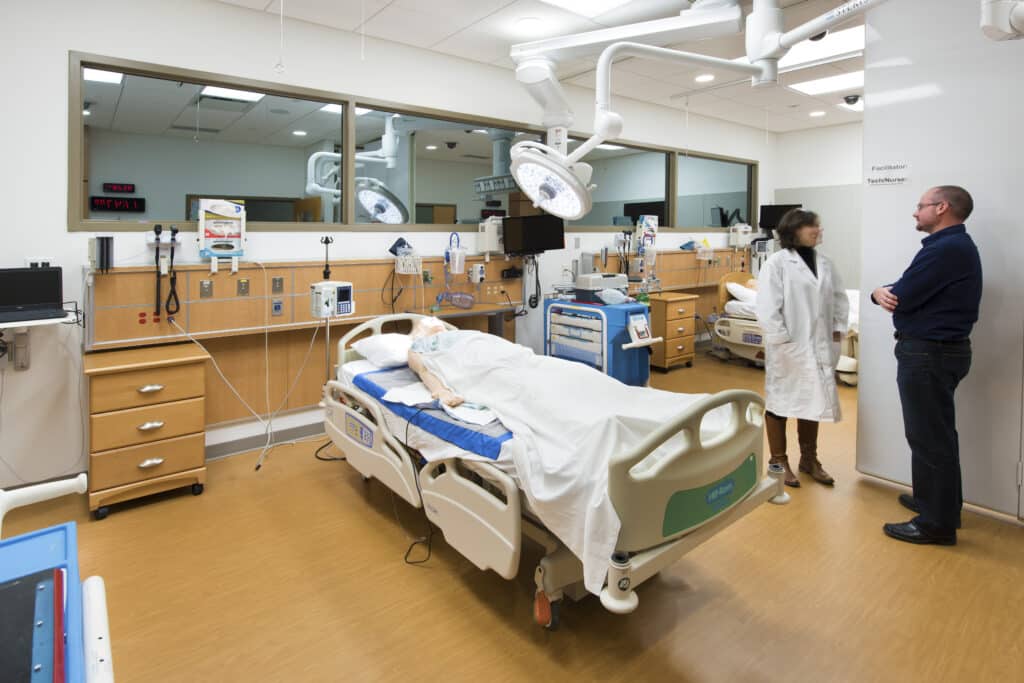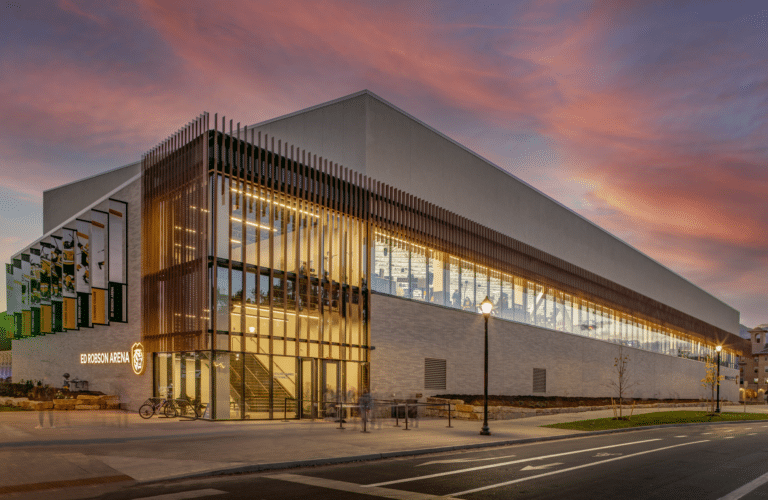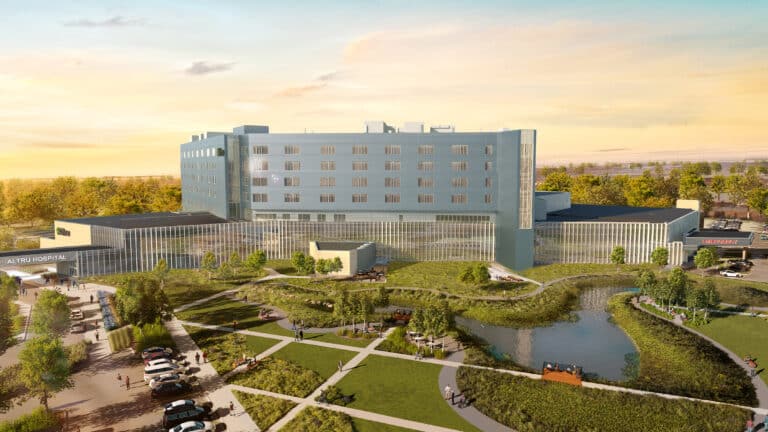By Christopher Kleingartner, Higher Education Practice Studio Leader, AIA, LEED AP
The recruitment and retention of healthcare professionals have long posed challenges for rural healthcare organizations. These communities often grapple with physician shortages, high turnover rates, and limited resources — all while serving populations with acute healthcare needs. However, higher education institutions dedicated to training healthcare professionals have a pivotal role in addressing these challenges. By fostering collaboration and embracing innovative facility design, JLG Architects is helping clients bridge the gap between healthcare education and rural practice.
The Recruitment & Retention Challenge
In rural communities like Rugby, ND (pop. 2,466), healthcare clinical staff are extremely difficult to recruit, catalyzing a vicious cycle and shrinking workforce that puts additional strain on those who remain. The new Rugby Heart of America Medical Center (HAMC), designed by JLG Architects, is a Rural Critical Access Hospital achieving its goals of optimizing clinical space and maximizing recruitment capabilities, allowing the hospital to do more with less.
To reduce burnout and turnover, JLG prioritized the needs of top talent, executing a design that includes staff respite rooms, a reimagined café, mother’s rooms for nursing, a staff wellness area, abundant access to natural light, and more. All of HAMC’s employee-focused amenities were designed to elevate the hospital’s ability to attract and retain top healthcare talent to better serve the entire rural region.
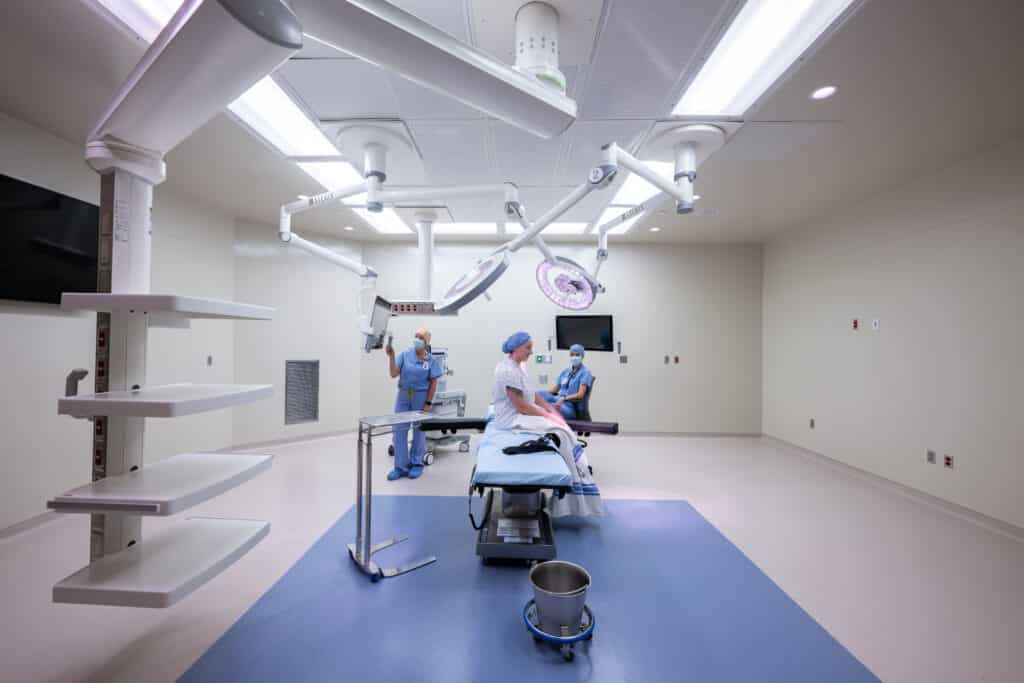
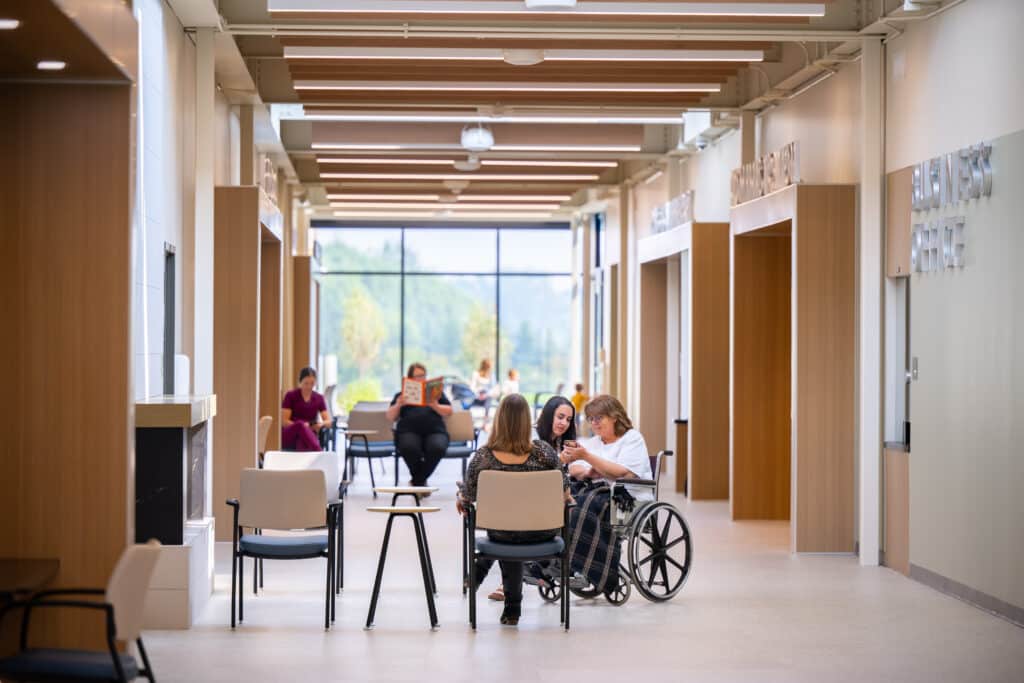
Photos by Chad Ziemendorf
To overcome challenges facing Rural healthcare organizations like HAMC, JLG addresses:
- Workforce Shortages: Rural areas are often considered less attractive due to geographic isolation, limited professional opportunities for family members, and fewer cultural or recreational amenities.
- High Turnover: Once recruited, healthcare professionals frequently leave due to burnout, lack of support, or the desire for better resources and professional development opportunities.
- Resource Limitations: Smaller facilities often lack the technology, equipment, and infrastructure found in urban counterparts, making it harder to attract and retain top talent.
The Role of Higher Education Institutions
Higher education institutions, especially those with health science programs, are uniquely positioned to address rural healthcare challenges.
For the North Dakota State Hospital in Jamestown, ND, JLG is currently designing an inpatient and residential behavioral health hospital in a rural part of the state. The new hospital will include simulation and classroom space focused on educating medical students from the University of North Dakota. This project also gives nursing students from colleges and universities around the state real-life experience embedded within the hospital. Educating tomorrow’s clinicians inside a modern and collaborative psychiatric hospital is a smart step in the right direction, creating an educational synergy that benefits both the facility and students.
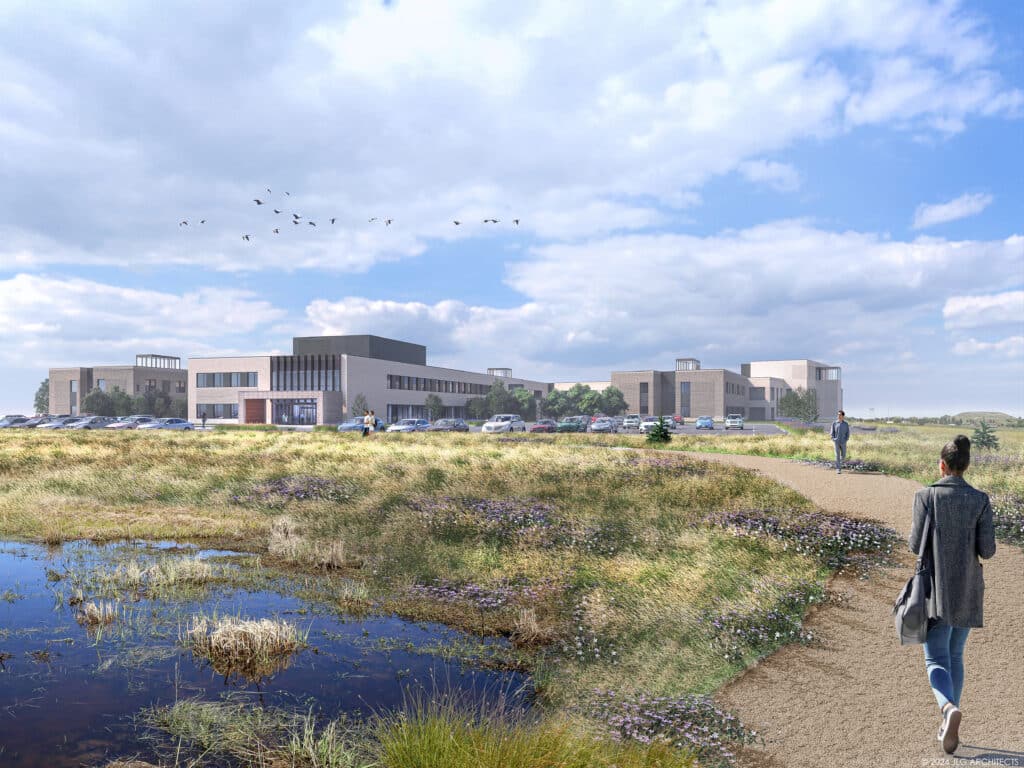
Through innovative programming, partnerships, and facility design, higher education institutions can:
- Cultivate Local Talent: Research indicates that students from rural backgrounds are more likely to practice in rural areas after graduation. Institutions can increase enrollment of rural students by offering targeted scholarships, outreach programs, and mentorship initiatives.
- Expand Clinical Training Opportunities: Collaborations with rural healthcare providers can ensure students experience rural practice during their education. These opportunities help demystify rural healthcare and expose students to the rewards of serving underserved communities.
- Integrate Interdisciplinary Education: Modern healthcare relies on teamwork across disciplines. Higher education institutions can break down silos by designing curricula and spaces that promote interdisciplinary collaboration, preparing students to thrive in diverse healthcare settings.
Blurring the Lines: The Role of Facility Design
Innovative facility design is a key strategy for aligning health professional education with rural healthcare needs. By creating spaces that blend healthcare delivery and education, institutions can foster collaboration and provide students with real-world experience.
In 2016—after a collaborative design endeavor between JLG Architects, Perkins+Will, and Steinberg Architects—the new four-level 318,000-square-foot School of Medicine and Health Sciences opened its doors on the University of North Dakota (UND) campus. Its shared, collaborative learning environment reimagined everything about the way UND delivered medical and health sciences education to develop a first-of-its-kind program.
Each of the four floors feature a daylit Main Street, including a wide corridor lined with flexible classrooms and labs. Anchoring the ends of Main Street are pairs of Learning Communities, each serving 100 students from all eight disciplines. The eight Learning Communities contain team space, lockers, study carrels, workrooms, standardized patient environments, and a variety of seating. While the building itself is 24/7, the Main Floor is designed for public access, with an auditorium, gathering spaces, a cafeteria, and an advanced simulation center.
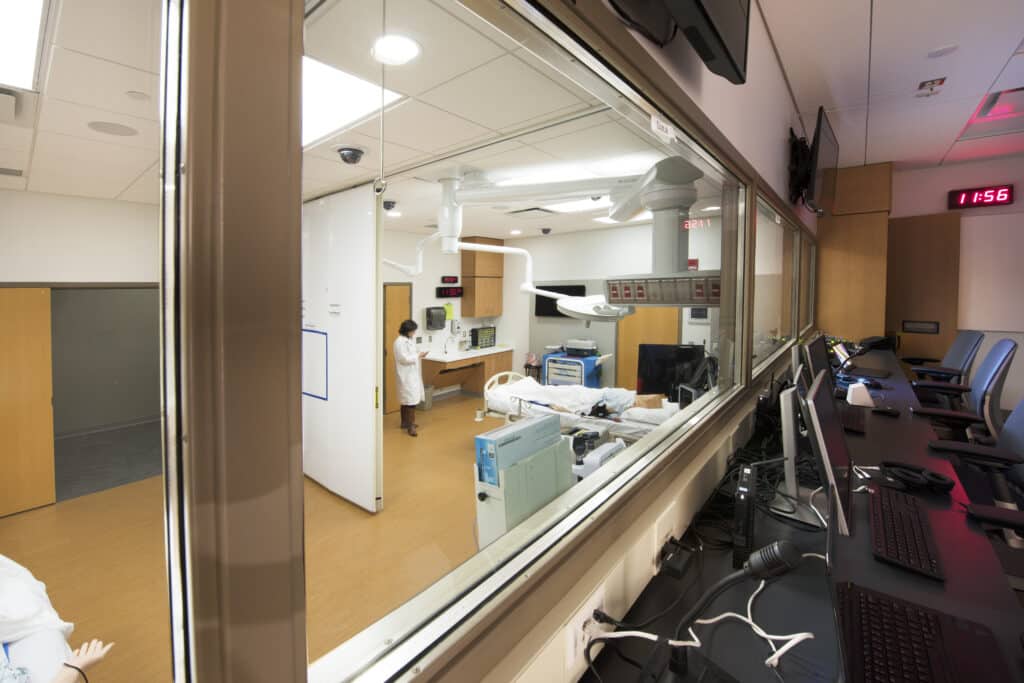
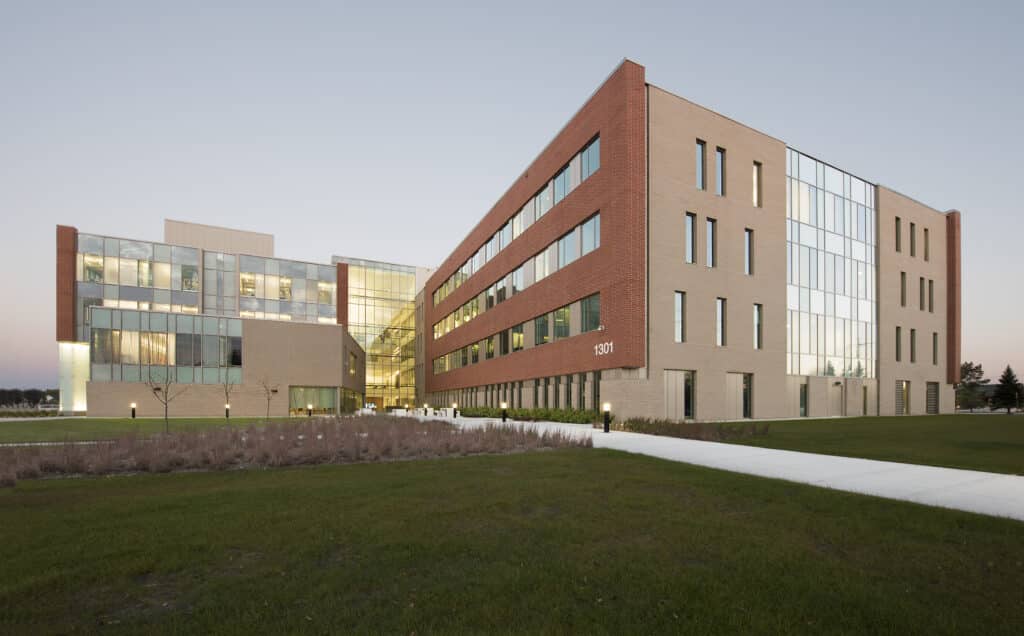
A Breakdown of Benefits: Uniting healthcare delivery + education
- Simulation and Training Centers: Modern facilities can include advanced simulation labs that mimic rural healthcare settings. These labs allow students to practice skills in environments similar to those they will encounter in their careers, building confidence and competence.
- Embedded Clinical Spaces: Some institutions are integrating clinical services into educational buildings. For example, a rural health sciences facility could include a functioning clinic where students work alongside practicing professionals, treating real patients and gaining firsthand experience.
- Flexible and Adaptable Design: Facilities should be designed to evolve with changing healthcare practices. Modular spaces, telehealth suites, and multipurpose classrooms can accommodate shifts in technology and pedagogy while serving diverse community needs.
- Community-Centered Spaces: Incorporating community spaces into educational and clinical facilities can strengthen ties between institutions and the populations they serve. Spaces for health fairs, wellness classes, and public health outreach programs help foster trust and engagement.
- Telehealth Integration: Given the increasing reliance on telemedicine, facilities must support remote care delivery and education. Telehealth labs allow students to practice virtual patient consultations, while rural clinics can use the same technology to connect with specialists in urban centers.
A Collaborative Vision for the Future
Solving the rural healthcare workforce crisis requires a collaborative approach. Higher education institutions must partner with rural healthcare organizations, policymakers, and community leaders to ensure their efforts align with local needs. Key strategies include:
- Joint Funding Initiatives: Federal and state grants can support the construction of facilities that serve dual purposes, such as training students and delivering care.
- Shared Resources: Partnerships can enable shared technology, faculty, and clinical expertise across institutions and healthcare providers.
- Long-Term Commitments: Loan forgiveness programs and guaranteed job placements can incentivize students to remain in rural areas after graduation.
Investing in Innovative Solutions
The challenges of recruiting and retaining healthcare professionals in rural areas are significant, but they are not insurmountable. Higher education institutions hold the key to creating a pipeline of well-trained, motivated professionals who see rural healthcare as a rewarding and viable career path. Through strategic collaboration and forward-thinking facility design, JLG Architects is blurring the lines between education and practice, ensuring rural communities receive the care they need and deserve.
By investing in innovative solutions today, we can lay the foundation for a healthier, more equitable tomorrow.
